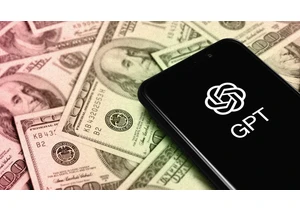It’s safe to say that we’re in another crypto winter as projects begin to go under and investors hold their heads. Arguably what set off this series of unfortunate events was the depegging of TerraUSD (UST) from Luna back in May, along with rising interest rates and macroeconomic recession.
Stablecoins can be a tricky business, so I want to be able to provide potential users with a guide on what kinds are out there, which to look for, and why the Luna and UST depegging happened. Let’s dive in.
Types of stablecoins
There are three kinds of stablecoins:
- fiat-backed (e.g., USDC)
- algorithmic (e.g., UST)
- overcollateralized (e.g., DAI)
Fiat-backed stablecoins are the most popular and widely used and are self-explanatory. They’re backed most commonly by the government-issued U.S. dollar, which tends to be very stable.
Algorithmic stablecoins, which everyone has been talking about of late, are not backed by any assets and attempt to maintain their peg through algorithms, hence the name. In UST’s case it was through minting and burning of its sister token, Luna, which as we saw in the recent market collapsed, and so did the $1 price of UST. People lost millions.
Overcollateralized stablecoins, like DAI on Ethereum or aUSD on Polkadot, are always backed by more collateral than the amount of stablecoin issued in the market. For example, $100 million in collateral backing for $25 million in stablecoins. This overcollateralization helps to avoid insolvency because more debt than assets are held by the stablecoin protocol, thus avoiding depegging of the stablecoin due to fluctuating price in collateral assets such as ETH or DOT.
DAI is a perfect example of this. The DAI stablecoin has been around since late 2017 and has maintained a steady peg, despite countless ups and downs in the market. The yield that can be earned on stablecoins is completely dependent on the apps that integrate them. Unsustainably high yields on stablecoins should definitely make you scratch your head and wonder, Is this too good to be true?
How to avoid getting burned again
Simply put, algorithmic stablecoins do well in a bull market but don’t work in a bear market, and recent events prove that. As Luna went, so too did UST’s peg to $1. The next time there’s a bull market, I would not be surprised to see another algorithmic stablecoin rise to prominence, not learning from past mistakes. Everyone who has witnessed recent events can do our best not to make the same mistake twice and to help educate others.
Much like investors who put their money with Bernie Madoff, getting crazy high returns and not asking questions, investors of today need to do their research and ask themselves if something is too good to be true. In this case, all someone had to do was lock their UST and they were magically getting returns of nearly 19.5%. A good example of this is Celsius. Just recently it was offering double the yield of its competitors. Now we’re seeing this collapse with Celsius freezing its network.
My top three tips for future stablecoin holders
I want to make sure that crypto participants moving forward have a stable framework to go from and can avoid financial ruin. Here are my top three tips to avoid problems.
- Buyer beware: If it seems too good to be true, it probably is. A historic return on the market is 8% a year, so don’t get greedy or be misled.
- Look under the hood: Look into how a stablecoin actually works. If you value decentralization and owning your own assets, look at DAI on Ethereum or aUSD on Polkadot. If you prefer paper money and don’t mind centralization, look at fiat-backed coins because real dollars are still trusted by many. From dollars to gold, you should know what is backing the token when you are looking to hold a stablecoin.
- Get comfortable: Ensure that the stablecoin is offered on your platform of choice. See where certain stablecoins are offered and how much you can earn on that platform. For instance, you can use stablecoins in decentralized finance apps. Or your preferred exchange such as Coinbase may offer yield on stablecoins.
Months before the crash of these algorithmic stablecoins, the issuers of the tokens began buying billions of dollars of Bitcoin collateral, effectively seeking to move toward the DAI and aUSD overcollateralized model. Their goal was to use the assets to potentially ensure the depegging wouldn’t happen. It obviously did, despite efforts to use the Bitcoin to bring the price of UST back to $1.
Why did they do it? Because overcollateralization works. Why? Think of it like going to the bank to get a car loan of $10,000 and the bank simply didn’t trust you, so you’d have to give the bank $20,000 as collateral. Now that would never happen, but that’s how DAI and aUSD work. Both have an extreme safety net that ensures a stable $1 peg and a stablecoin’s fit for use by decentralized finance apps is to bring yields to users.
In the next few years, expect to see more stablecoins looking to incorporate this model. Just don’t be surprised if you see something similar to UST come back again.
Dan Reecer is the chief growth officer of Acala.
Zaloguj się, aby dodać komentarz
Inne posty w tej grupie

I have not found much joy in iPhone photography of late. Between the flat,

Far-right extremists are exploiting TikTok’s “use-this-sound” feature as a Trojan


The role of the CFO is evolving—and fast. In today’s volatile business environment, finance leaders are navigating everything from unpredictable tariffs to tightening regulations and rising geopol

In June, Google released its newest smartphone operating system, Android 16. The same month, Apple previewed its next smartphone oper


I’ve worked at the bleeding edge of robotics innovation in the United States for almost my entire professional life. Never before have I seen another country advance so quickly.
In
